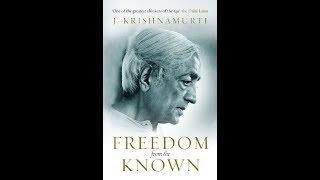Who were Adam and Eve? Did they exist, is there a basis in truth? What is the true origin story of humanity?
THE story of Adam and Eve in the Garden of Eden is the greatest parable in the Bible. It is supremely important because it explains the real nature of our life here on earth. It tells us about ourselves and how we bring about the conditions in which we live. It is the textbook on spiritual and psychological anatomy. When you thoroughly understand the Garden of Eden story you will understand human nature, and when you understand human nature, you will have dominion over it.
This parable is placed almost at the beginning of the Bible because it is the foundation upon which the whole of the Bible is built; and all the rest of the Bible, to the end of Revelation, assumes an understanding of the Garden of Eden parable. Indeed, there is only one Bible section in front of it, and that is the basic first chapter which gives the fundamentals of spiritual demonstration.
The Bible is not primarily intended to teach history, or biography, or natural science. It is intended to teach psychology and metaphysics. It deals primarily with states of mind and the laws of mental activity; and anything else is only incidental. Each of the principal characters in the Bible represents a state of mind that any of us may experience; and the events that happen to the various characters illustrate the consequences to us of entertaining such states of mind, either good or bad. Some of the Bible characters, such as Moses, Elijah, and Paul, are historical figures.
They were real men who lived on earth and did the deeds attributed to them; nonetheless they represent states of mind also, and, of course, they outpictured different states of mind at different times as their lives unfolded. Other Bible characters, such as Adam and Eve, the Prodigal Son, the Good Samaritan,1 or the Scarlet Woman2 are, of course, fictional and never had an actual existence; but they express states of mind too, and always in a remarkably simple and graphic manner.
A state of mind cannot be viewed or pictured directly as can a material object. It can only be described indirectly, by a figure of speech, an allegory, or a parable, but, unfortunately, thoughtless people have always tended to take the figure of speech or the allegory literally, at its face value, thus missing the real meaning, because it lies hidden beneath.
The veil of Isis comes to be worshiped while Isis herself is forgotten. Another evil that follows from this course is that, since many parables obviously cannot be literally true, such people, unable to accept the authenticity of the story, proceed to reject the Bible altogether as a collection of falsehoods. This was the attitude of Ingersoll in America, Bradlaugh in England, and many others.
The fundamentalist, on the other hand, does violence to his common sense in trying to make himself believe that these parables are literally true, while at the bottom of his heart—which is the place that matters—he cannot really believe them, and so a dangerous conflict is set up within his subconscious.
Here we discuss Adam and Eve through the lens of Emmet Fox and Manly P Hall both metaphysical master minds.
- Category
- Spirituality/Religon


